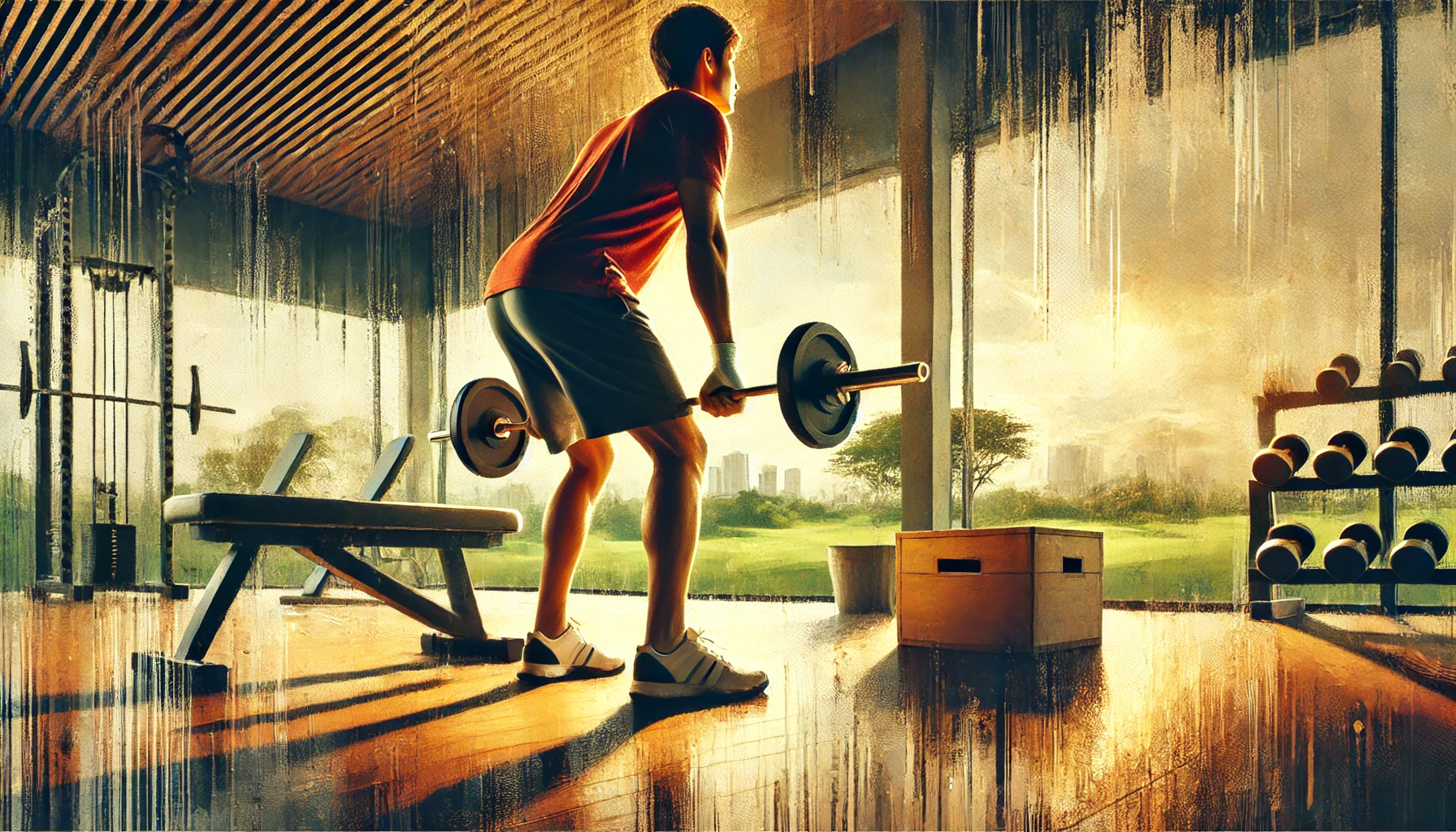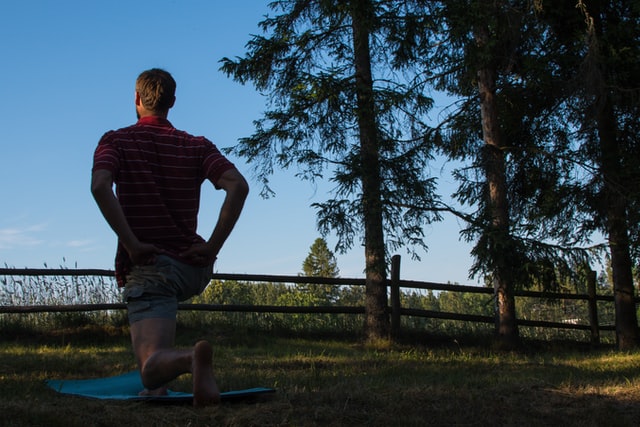- Home
- Golf Training
- Golf Warm Up Routine
Golf Warm Up Routine: 7 Simple Steps for Better Performance
I'll be honest with you – I used to be one of those weekend golfers who rolled out of bed, grabbed a coffee, and sprinted to the first tee with maybe two practice swings. Sound familiar?
After 25 years of weekend golf, I've learned that skipping a proper warm up is like trying to start your car in winter without letting the engine heat up first. You might get moving, but it's going to be rough for a while.
The worst part? I was throwing away strokes before I even started playing. Research shows that golfers who perform a deliberate dynamic warm-up can save an average of 1.5 strokes per round. That's enough to turn a frustrating 95 into a satisfying 93, or finally break that elusive 80.
Why Your Body Needs a Golf Warm Up Routine
Here's something that changed my perspective completely: golf is actually an explosive sport, just like sprinting. Think about it – you're generating tremendous force through your body in less than 1.5 seconds during your swing.
According to Tyler Campbell, head trainer at the Golf Performance Center in Ridgefield, Connecticut and one of Golf Digest's Top 50 Golf-Fitness Trainers, "A proper dynamic warm-up wakes up your nervous system and allows the brain to talk to the body and respond favorably to the demands being asked of it."
The science backs this up:
According to TPI research conducted by Dr. Ben Langdown, golfers who completed specific warm-up protocols saw remarkable improvements:
- Up to 24% increase in club head speed
- 19% improvement in ball speed
- Some golfers gained up to 45 yards in carry distance
- 13.36% improvement in consistent ball strike
🎯 Why Warm-Up Works
- ⭐ Wakes up your nervous system for better coordination
- 🔧 Increases blood flow to golf-specific muscles
- 💡 Improves joint mobility for fuller rotation
- 📊 Can add significant distance to your drives
But there's more.
Without a proper warm-up, you're also setting yourself up for injury. As I learned the hard way after tweaking my back on the third hole of a weekend round – your body needs preparation for the rotational forces of golf.
How Long Should Your Golf Warm Up Routine Be?
This is where most weekend golfers get it wrong. You don't need an hour-long routine like the pros. Research from the 2018 World Scientific Congress of Golf found that effective warm-ups can be as short as 3-5 minutes.
Here's what actually works for time-pressed golfers:
- Minimum effective dose: 2-3 minutes of dynamic movements
- Optimal routine: 7-10 minutes including light stretching and practice swings
- Full preparation: 15-20 minutes when you have extra time
Mark Baldwin, PGA Tour player and GOLFTEC ambassador, emphasizes this practical approach: "Even if you have limited time, following a simple warm-up routine can help you engage your muscles, get your body moving, and focus on specific areas of your game."
The key insight from my years of weekend golf: consistency matters more than duration. A 5-minute routine you actually do beats a 30-minute routine you skip because you're running late.
What Happens When You Skip Your Warm Up
Let me paint a picture that probably sounds familiar. You arrive at the course five minutes before your tee time, rush to the first tee, and promptly hit your opening drive into the woods. Your second shot feels stiff and awkward. By the fourth hole, you're finally starting to feel loose – but those early holes have already damaged your scorecard.
According to research, skipping warm-up causes:
- Decreased power output and distance
- Poor coordination and timing in early holes
- Increased injury risk, especially to the back and wrists
- Inconsistent ball striking until your 5th or 6th hole
- Mental frustration that affects the entire round
Dr. Greg Rose, co-founder of the Titleist Performance Institute and board-certified Doctor of Chiropractic with an engineering degree from the University of Maryland, explains: "Static stretching can reduce power output by up to 28% immediately after stretching and still by 9% an hour later."
This means if you stretch at home before heading to the course, you might actually be hurting your performance.
The 7-Step Golf Warm Up Routine That Works
After years of experimenting and talking with fellow weekend warriors, here's the routine that's become my go-to. It takes 7-10 minutes and works whether you're at a fancy country club or a basic municipal course.
Step 1: Arm Circles and Shoulder Activation (1 minute)
Start with your arms out wide and make 10-15 circular motions in each direction. This gets blood flowing to your shoulders and activates the muscles you'll use for your swing.
As Tyler Campbell notes, "You need to wake up your nervous system before asking your body to perform explosive movements."
Pro tip from my experience: Start small with the circles and gradually make them larger. This prevents that awkward shoulder catch that sometimes happens on cold mornings.
Step 2: Hip Circles and Leg Swings (1 minute)
Stand with your hands on your hips, feet shoulder-width apart, and make slow circles with your hips. Then do 10 leg swings forward and back for each leg, using a golf club for balance if needed.
According to research published in the Journal of Men's Health, dynamic warm-up increased driving distance by 2.65% in elite golfers compared to static stretching.
Step 3: Body Weight Squats with Club Overhead (1 minute)
Grab a golf club and hold it overhead with both hands. Perform 10 squats while keeping the club raised. This activates your legs, core, and shoulders simultaneously.
Campbell explains the technique: "Keep your knees over your laces – this will prevent your feet from flaring too much. Push off the ground and return to your starting position, being sure that your knees don't buckle in on the way up."
Step 4: Torso Rotations (1-2 minutes)
Get into your golf stance and hold a club across your chest. Step one foot behind you into a split stance and make controlled rotations left and right. Do 10 reps, then switch legs.
This directly mimics the rotational movement of your golf swing while warming up your core muscles.
🔧 Perfect Your Form
- ⚡ Keep movements controlled, not rushed
- 🎯 Focus on mobility, not stretching hard
- 💡 Breathe normally throughout each movement
- 📊 Quality over quantity – 10 good reps beat 20 sloppy ones
Step 5: Forward Bends with Hip Hinge (1 minute)
Stand tall, reach overhead to extend your spine, then hinge from your hips and reach toward your toes. Campbell advises: "Refrain from rounding your back or tucking your hips – this is not a proper hip hinge."
Perform this movement 10 times, using your breath to get a deeper stretch as you exhale on the way down.
Step 6: Reverse Lunges with Overhead Reach (1-2 minutes)
Step your right foot back into a reverse lunge, raise your right arm overhead, and rotate your torso toward your left leg. You should feel a stretch through your hip, oblique, and abdomen. Complete 10 reps on each side.
This movement opens up the exact muscle groups you need for a powerful, unrestricted golf swing.
Step 7: Practice Swings with Speed (1-2 minutes)
Grab your driver and make 10 fast practice swings to the left, then switch your grip and make 10 fast swings to the right. Campbell explains: "This will help you create speed and get your blood pumping before your round."
Why this works: You're rehearsing the exact movement you're about to perform while gradually increasing the intensity.
Should You Hit Balls Before Your Round?
This is where many weekend golfers waste valuable time. Here's what I've learned: the driving range is for practice, not warm-up.
The research-backed approach:
According to a study from the University of Fraser Valley and University of Nevada-Las Vegas, golfers who practiced in a "randomized" manner – hitting different clubs to different targets – performed better than those who hit multiple shots with the same club.
My practical recommendation:
If you have extra time after your dynamic warm-up:
- Hit 5-10 wedges at different distances
- Take a few swings with a 7-iron
- Finish with 2-3 drives using the club you'll hit on the first tee
But here's the key insight: If you're pressed for time, choose the 7-minute dynamic warm-up over hitting balls. Your body preparation is more important than finding your swing on the range.
💡 Smart Practice Strategy
- 🎯 Dynamic warm-up first, always
- ⭐ If time is short, skip the range
- 🔧 When you do hit balls, vary clubs and targets
- 📊 End with the club you'll use on hole #1
Common Golf Warm Up Mistakes to Avoid
After watching countless weekend golfers at courses around the country, here are the mistakes that kill a good warm-up routine:
Mistake #1: Static Stretching Before Playing
According to research published in the PMC database, static stretching can reduce strength by up to 28% immediately after stretching. Save the static stretches for after your round.
Mistake #2: Rushing Through Movements
I used to blast through my warm-up in 90 seconds and wonder why it didn't help. Quality matters more than speed. Take your time with each movement.
Mistake #3: Only Warming Up Your Swing
Golf uses your entire body. Don't forget your legs, hips, and core – these generate the power in your swing.
Mistake #4: Inconsistent Routines
The biggest game-changer for me was doing the same routine before every round. Consistency reduces variables and builds confidence.
What Mark Baldwin emphasizes: "The range is for experimentation; the course is for execution. Your warm-up should prepare your body, not fix your swing."
Quick Warm Up Options for Time-Crunched Golfers
Let's be realistic – sometimes you're going to be running late. Here are three condensed routines that still provide benefit:
The 2-Minute Emergency Routine
- 30 seconds of arm circles and shoulder rolls
- 30 seconds of hip circles and leg swings
- 30 seconds of torso rotations with a club
- 30 seconds of practice swings at increasing speed
The 5-Minute Standard Routine
Follow the 7-step routine above but do 5 reps instead of 10 for each exercise.
The 10-Minute Comprehensive Routine
Complete the full 7-step routine plus 2-3 minutes of putting practice to dial in your touch on the greens.
According to Mayo Clinic research, even brief dynamic warm-ups improve flexibility and reduce injury risk significantly compared to no preparation.
The Mental Side of Your Warm Up Routine
Here's something I didn't appreciate for years: your warm-up routine is as much mental as it is physical.
The psychological benefits:
- Creates a consistent pre-round ritual that builds confidence
- Helps transition from daily stress to golf focus
- Gives you time to visualize your round and set realistic expectations
- Provides a sense of control and preparation
As Dr. Greg Rose notes from his work with tour professionals: "The most effective players have consistent routines that prepare both body and mind for performance."
I've found that my warm-up routine helps me leave work stress in the parking lot and get into "golf mode." This mental transition might be just as important as the physical preparation.
🧠 Mental Warm-Up Benefits
- ⭐ Builds pre-round confidence through routine
- 🎯 Helps transition from daily stress to golf focus
- 💡 Provides time for positive visualization
- 🔧 Creates sense of control and preparation
What the Research Really Says About Golf Warm Ups
Let me share some eye-opening statistics that convinced me to take warm-ups seriously:
From TPI research by Dr. Ben Langdown:
- Control group (no warm-up): Baseline performance
- Dynamic stretching group: 17.4 yards increase in carry distance
- Resistance band group: 11-44.5 yards increase depending on individual response
From Campbell's Golf Digest study:
- Average stroke improvement: 1.5 strokes per round with dynamic warm-up
- Injury risk reduction: Significant decrease in back and wrist injuries
- Performance consistency: Better early-hole performance
From Journal of Men's Health research:
- 2.65% increase in driving distance with dynamic warm-up
- 2.21% increase with post-activation potentiation exercises
- Improved accuracy along with distance gains
These aren't small differences. For a weekend golfer averaging 240 yards off the tee, a 2.65% increase means an extra 6 yards per drive. Over 14 drives per round, that's 84 yards of additional distance – enough to reach greens in regulation you'd normally miss.
Building Your Personal Warm Up Routine
Here's the reality: the best warm-up routine is the one you'll actually do consistently. After talking with dozens of weekend golfers, here's how to build a routine that sticks:
Step 1: Assess Your Available Time
Be honest about how much time you typically have before rounds. Build your routine around your realistic schedule, not your ideal schedule.
Step 2: Identify Your Problem Areas
Do you struggle with back stiffness? Focus extra time on hip and spine mobility. Shoulder issues? Emphasize arm circles and rotations.
Step 3: Start Simple and Build
Begin with the 5-minute routine for two weeks. Once it becomes habit, add elements if you have more time.
Step 4: Track Your Results
Notice your performance on the first few holes. Are you hitting it better? Feeling more confident? This feedback will motivate you to continue.
My personal evolution: I started with just arm circles and practice swings. Over six months, I gradually added elements until I had my current 7-10 minute routine. The key was making it sustainable.
Key Takeaways for Weekend Warriors
After years of refining my approach and watching what works for other weekend golfers, here are the most important points:
The bottom line: A consistent 5-10 minute dynamic warm-up routine can save you 1.5 strokes per round and add meaningful distance to your drives. That's the difference between breaking 90 and shooting 88, or finally reaching that coveted 79.
Most importantly: Start where you are, with the time you have. A 2-minute routine is infinitely better than no routine. Build the habit first, then optimize the details.
Remember, we're weekend warriors, not tour professionals. We need routines that work with real life – kids running late, work calls, traffic delays. The perfect warm-up you never do won't help your game.
Start with something simple this weekend. Your back, your scorecard, and your buddies will thank you when you're not complaining about being "cold" for the first six holes.
How Should I Warm Up If I Have Back Problems?
If you deal with back issues (and many of us weekend golfers do), focus on gentle mobility rather than aggressive stretching. According to Mayo Clinic guidance, dynamic movements are safer than static stretches for people with back concerns.
Safe modifications:
- Start with smaller range of motion and gradually increase
- Focus on hip circles and gentle torso rotations
- Avoid deep forward bends if they cause discomfort
- Consider consulting with a physical therapist familiar with golf movements
Dr. Greg Rose emphasizes: "Fix function first" – meaning address any pain or limitation before worrying about performance enhancement.
Personal note: I dealt with occasional back stiffness and found that consistent gentle warm-ups actually reduced my issues over time. The key was starting easy and being consistent.
What Should I Do If I Arrive Late to the Course?
Life happens. Here's your emergency 60-second routine when you're literally walking to the first tee:
- 15 seconds of arm circles while walking
- 15 seconds of gentle hip circles
- 15 seconds of slow practice swings with increasing speed
- 15 seconds of deep breathing and mental preparation
The key insight: Even minimal preparation is better than none. Don't skip warm-up entirely just because you can't do a full routine.
As Mark Baldwin learned during his professional career: "You're just one step away from that dream performance, but you never really know when it's your week." Prepare yourself for success even when circumstances aren't perfect.
How Often Should I Change My Warm Up Routine?
Consistency trumps variety for weekend golfers. Once you find a routine that works, stick with it for at least 8-10 rounds before making changes.
When to modify:
- You're consistently skipping parts due to time constraints
- You develop discomfort or pain during certain movements
- Your schedule changes significantly (different tee times, etc.)
- You want to address a specific physical limitation
What to keep constant:
- The basic movement patterns (rotation, hip mobility, arm activation)
- The total time commitment
- The order of exercises (gentle to more dynamic)
According to TPI research, golfers who maintain consistent pre-round routines show better long-term performance improvements than those who constantly change their approach.
Should I Warm Up Differently for Different Weather?
Absolutely. Your body needs different preparation in 40-degree weather versus 90-degree heat.
Cold weather modifications:
- Extend your warm-up time by 2-3 minutes
- Start movements even more gradually
- Add extra attention to your hands and wrists
- Consider warm-up indoors before heading to the first tee
Hot weather adjustments:
- Focus on hydration before and during warm-up
- Seek shade when possible
- Reduce intensity slightly to avoid overheating
- Include neck and shoulder movements to prevent cramping
According to research: Temperature affects muscle viscosity and joint mobility. Cold muscles need more gradual preparation, while heat requires attention to hydration and overheating prevention.
My cold-weather experience: I've learned to do basic arm and hip circles in my car with the heat on, then complete the routine outside. It makes a huge difference on those frosty morning rounds.





